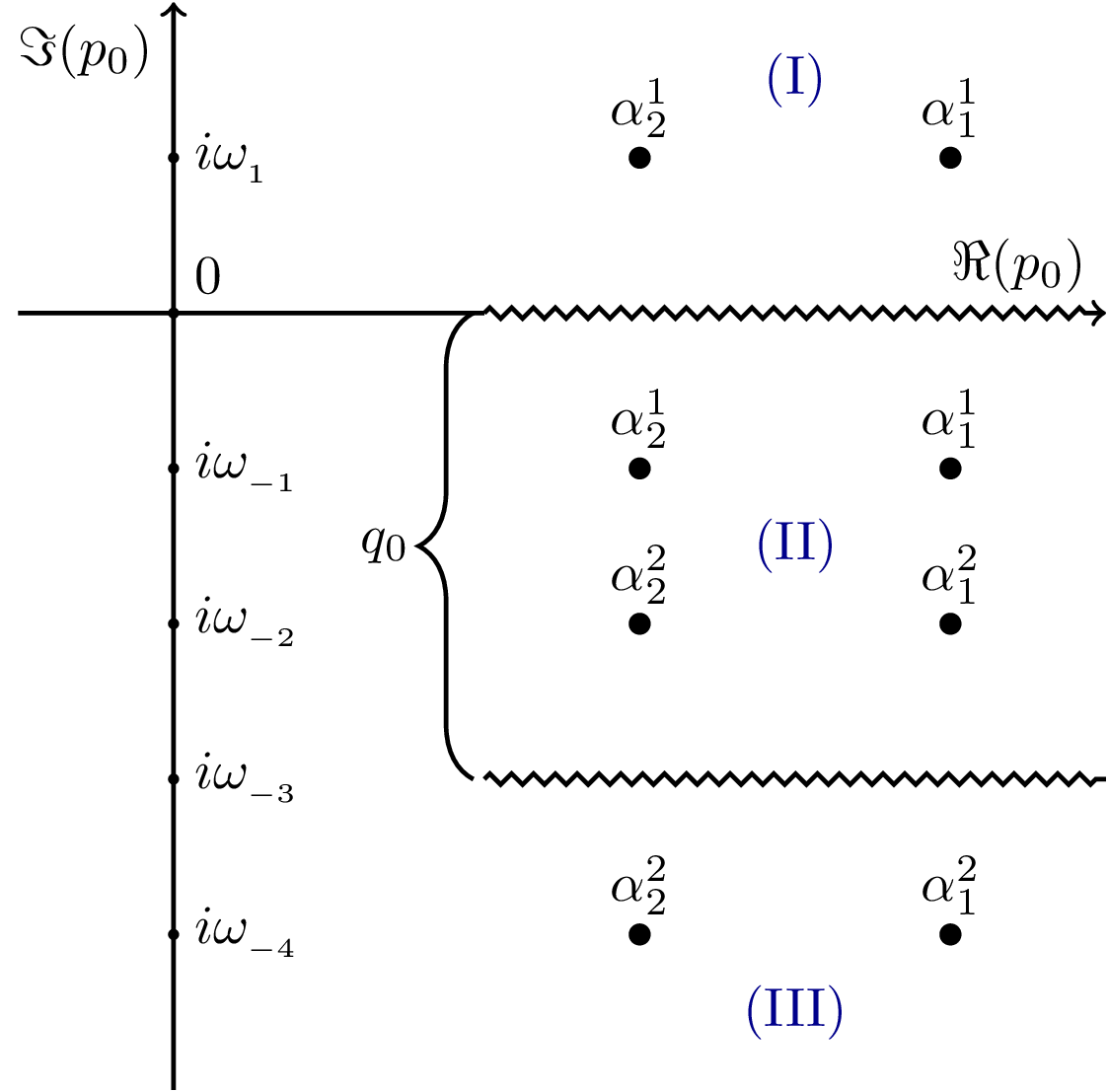QFT Propagator Poles
Complex plane visualization of propagator poles and branch cuts in quantum field theory. The diagram shows the analytic structure of Green's functions, including the relationship between retarded/advanced propagators and the placement of poles relative to the real axis. This structure helps understand causality and the connection to Matsubara frequencies.

Download
Code
qft-propagator-poles.typ (81 lines)
qft-propagator-poles.tex (41 lines)